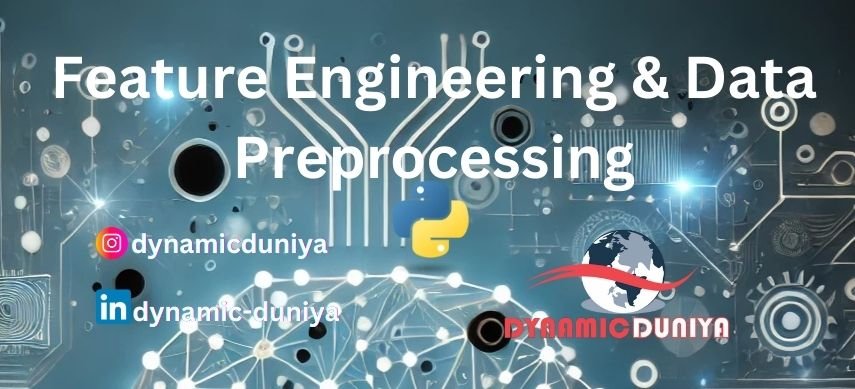- Unsupervised Learning
-
Overview
- Introduction to Unsupervised Learning
- K-Means Clustering Algorithm
- Hierarchical Clustering
- Principal Component Analysis (PCA)
- Autoencoders for Dimensionality Reduction
- Gaussian Mixture Models (GMM)
- Association Rule Learning (Apriori, FP-Growth)
- DBSCAN Clustering Algorithm
- Self-Organizing Maps (SOM)
- Applications of Unsupervised Learning
Autoencoders for Dimensionality Reduction
Add to BookmarkAutoencoders are a type of neural network designed to learn efficient representations of data, often used for dimensionality reduction, feature learning, and denoising. Unlike PCA, autoencoders can model non-linear relationships, making them more powerful for complex datasets.
An autoencoder consists of two parts:
- Encoder: Compresses the input into a lower-dimensional representation.
- Decoder: Reconstructs the input from the compressed data.
Why Use Autoencoders?
- Handle non-linear data structures unlike PCA.
- Learn compact, meaningful features.
- Useful for image compression, noise reduction, anomaly detection, and data visualization.
Architecture of an Autoencoder
Input → [Encoder] → Bottleneck (latent space) → [Decoder] → Output (Reconstruction)- Input Layer: Raw data
- Encoder: Reduces input size
- Bottleneck Layer: Compressed feature representation
- Decoder: Attempts to reconstruct original input
Python Example using TensorFlow/Keras
Install tensorflow if not already installed
pip install tensorflowimport numpy as np
from tensorflow.keras.models import Model
from tensorflow.keras.layers import Input, Dense
from tensorflow.keras.datasets import mnist
from tensorflow.keras.optimizers import Adam
import matplotlib.pyplot as plt
# 1. Load and normalize MNIST data
(x_train, _), (x_test, _) = mnist.load_data()
x_train = x_train.astype('float32') / 255.
x_test = x_test.astype('float32') / 255.
x_train = x_train.reshape((len(x_train), -1))
x_test = x_test.reshape((len(x_test), -1))
# 2. Define autoencoder architecture
input_dim = x_train.shape[1]
encoding_dim = 32 # Reduced feature size
input_img = Input(shape=(input_dim,))
encoded = Dense(encoding_dim, activation='relu')(input_img)
decoded = Dense(input_dim, activation='sigmoid')(encoded)
autoencoder = Model(input_img, decoded)
# 3. Compile and train
autoencoder.compile(optimizer=Adam(), loss='binary_crossentropy')
autoencoder.fit(x_train, x_train,
epochs=10,
batch_size=256,
shuffle=True,
validation_data=(x_test, x_test))
# 4. Encode and visualize
encoder = Model(input_img, encoded)
encoded_imgs = encoder.predict(x_test)
# 5. Visualize original vs reconstructed images
decoded_imgs = autoencoder.predict(x_test)
n = 5
plt.figure(figsize=(10, 4))
for i in range(n):
# Original
ax = plt.subplot(2, n, i + 1)
plt.imshow(x_test[i].reshape(28, 28), cmap='gray')
plt.axis('off')
# Reconstructed
ax = plt.subplot(2, n, i + 1 + n)
plt.imshow(decoded_imgs[i].reshape(28, 28), cmap='gray')
plt.axis('off')
plt.suptitle("Original and Reconstructed Images using Autoencoder")
plt.show()Output-
Explanation
- Autoencoders are trained to reconstruct input data.
- The bottleneck (encoding) layer learns a compressed representation.
- We visualize how well the autoencoder reconstructs the digits from MNIST.
Applications of Autoencoders
- Dimensionality reduction (non-linear)
- Data denoising
- Image compression
- Anomaly detection
- Feature extraction for other ML models
Advantages
- Handles non-linearity and complex data structures
- Can work with images, text, tabular data
- Customizable architecture (depth, neurons, activation)
Limitations
- Requires more data and computation than PCA
- Risk of overfitting if the network is too large
- Doesn't guarantee the most informative features
Tips for Beginners
- Start with small networks and fewer dimensions (e.g., 32 or 64).
- Use normalized input (0 to 1) for faster convergence.
- Use MSE or binary cross-entropy as loss depending on your data.
Tips for Professionals
- Add regularization or dropout to prevent overfitting.
- Use convolutional autoencoders for image data.
- Stack multiple autoencoders (deep autoencoders) for better compression.
- For anomaly detection, monitor reconstruction error thresholds.
Summary
Autoencoders are powerful tools for learning compressed, meaningful representations of data. They outperform linear methods like PCA in capturing complex relationships and are widely used for denoising, anomaly detection, and dimensionality reduction in machine learning workflows.
Prepare for Interview
- JavaScript Interview Questions for 5+ Years Experience
- JavaScript Interview Questions for 2–5 Years Experience
- JavaScript Interview Questions for 1–2 Years Experience
- JavaScript Interview Questions for 0–1 Year Experience
- JavaScript Interview Questions For Fresher
- SQL Interview Questions for 5+ Years Experience
- SQL Interview Questions for 2–5 Years Experience
- SQL Interview Questions for 1–2 Years Experience
- SQL Interview Questions for 0–1 Year Experience
- SQL Interview Questions for Freshers
- Design Patterns in Python
- Dynamic Programming and Recursion in Python
- Trees and Graphs in Python
- Linked Lists, Stacks, and Queues in Python
- Sorting and Searching in Python
Random Blogs
- Store Data Into CSV File Using Python Tkinter GUI Library
- Understanding SQL vs MySQL vs PostgreSQL vs MS SQL vs Oracle and Other Popular Databases
- Important Mistakes to Avoid While Advertising on Facebook
- Exploratory Data Analysis On Iris Dataset
- OLTP vs. OLAP Databases: Advanced Insights and Query Optimization Techniques
- Window Functions in SQL – The Ultimate Guide
- SQL Joins Explained: A Complete Guide with Examples
- Ideas for Content of Every niche on Reader’s Demand during COVID-19
- What Is SEO and Why Is It Important?
- Government Datasets from 50 Countries for Machine Learning Training
- Python Challenging Programming Exercises Part 2
- AI in Cybersecurity: The Future of Digital Protection
- AI in Marketing & Advertising: The Future of AI-Driven Strategies
- Why to learn Digital Marketing?
- Top 10 Blogs of Digital Marketing you Must Follow
Datasets for Machine Learning
- Awesome-ChatGPT-Prompts
- Amazon Product Reviews Dataset
- Ozone Level Detection Dataset
- Bank Transaction Fraud Detection
- YouTube Trending Video Dataset (updated daily)
- Covid-19 Case Surveillance Public Use Dataset
- US Election 2020
- Forest Fires Dataset
- Mobile Robots Dataset
- Safety Helmet Detection
- All Space Missions from 1957
- OSIC Pulmonary Fibrosis Progression Dataset
- Wine Quality Dataset
- Google Audio Dataset
- Iris flower dataset


